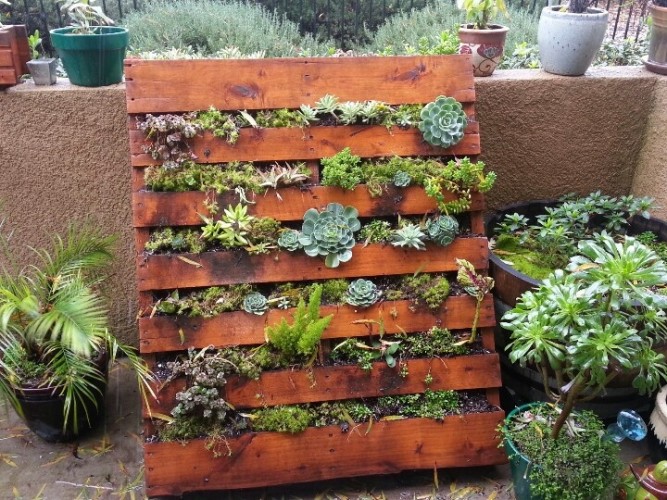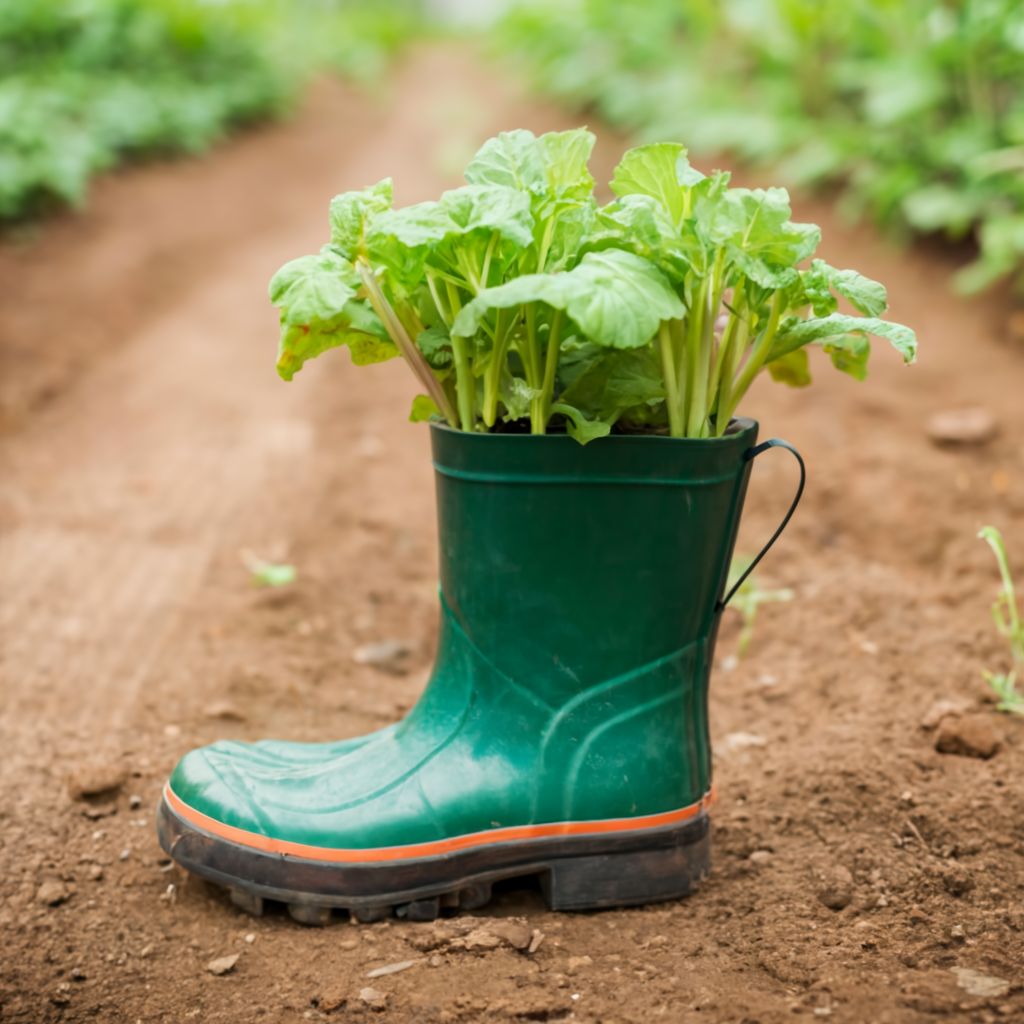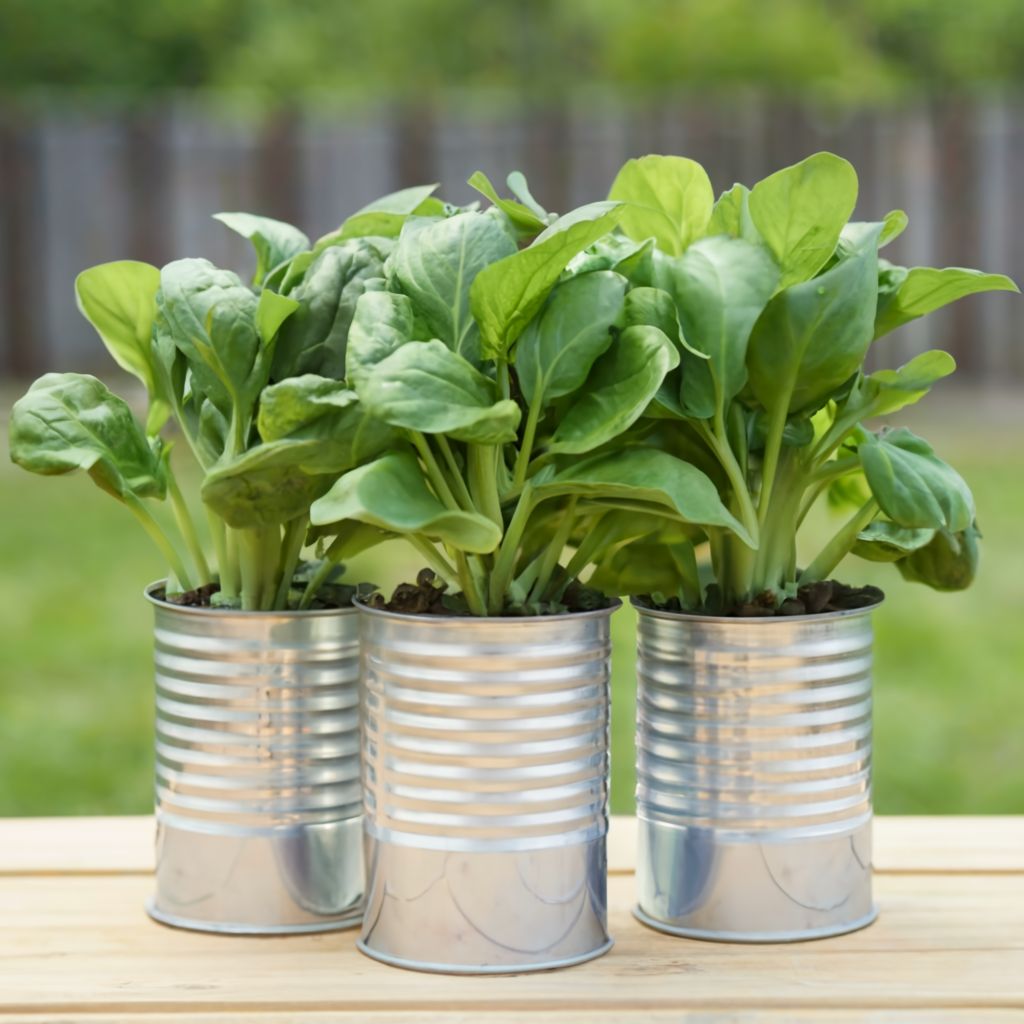
Gone are the days when sprawling plots were the only way to cultivate a bountiful harvest. Container gardening has emerged as a vibrant and accessible solution for urban dwellers, apartment residents, and anyone with a passion for homegrown goodness. But containers aren’t just about practicality; they offer a canvas for creativity, allowing you to transform everyday objects into thriving mini-ecosystems.
So, grab your gardening gloves and unleash your inner artist! Let’s explore 20 unique container vegetable garden ideas that will add a touch of whimsy and productivity to your space.
20 Creative Container Vegetable Garden Ideas
Upcycled Treasures: Giving New Life to Old Objects
1. Wellie Wonders

Don’t toss out those old rain boots! Drill drainage holes, fill them with soil, and plant trailing vegetables like cherry tomatoes or cascading herbs. Hang them on a fence or wall for a quirky touch.
2. Galvanized Tub Time Machine

Breathe new life into a vintage galvanized tub. Line it with plastic, fill it with soil, and plant vibrant lettuce and spinach for a pop of color.
3. Miniature Marvels
Opt for miniature varieties of fruits and vegetables, which require less room and take shorter time to mature. Some popular options include dwarf tomato plants, baby carrots, and tiny lettuce heads.
4. Shoe Organizer Salad Bar

Repurpose a hanging shoe organizer into a vertical herb garden. Line each pocket with plastic and plant a variety of herbs like basil, parsley, and cilantro. This space-saving solution is perfect for balconies and patios.
5. Tin Can Tower

Upcycle tin cans of different sizes. Drill drainage holes, paint them in vibrant colors, and stack them vertically on a sturdy base to create a tiered container garden. Plant shallow-rooted vegetables like radishes, carrots, and beets in the lower cans and leafy greens in the upper ones.
Unleashing Your Inner Artist: Creative Container Ideas
6. DIY Pallet Paradise

Construct a vertical garden using recycled pallets. Attach planter pockets to the slats and plant a mix of herbs, flowering vegetables like nasturtiums, and lettuces for a visually stunning display.
7. Cinder Block Creativity
Stack cinder blocks in various configurations to create raised garden beds. Fill them with soil and plant a variety of vegetables like peppers, eggplants, and leafy greens.
8. Bathtub Bounty
An old bathtub can be transformed into a charming vegetable planter. Line it with plastic, drill drainage holes, and fill it with soil. Plant a mix of herbs, lettuces, and even cherry tomatoes for a whimsical touch.
9. Shopping Cart Surprise
Breathe new life into a forgotten shopping cart. Add a liner, fill it with soil, and plant a variety of vegetables like lettuce, spinach, and radishes.
10. Hanging Basket Bonanza
Create a cascading vegetable display using hanging baskets. Plant trailing vegetables like cherry tomatoes, cucumbers, and peppers for a vibrant and productive addition to your porch or patio.
Thinking Outside the Box: Unusual Containers
11. Kitchen Colander Kaleidoscope
Repurpose a colander. Drill drainage holes, line it with a mesh screen, and fill it with soil. Plant a mix of salad greens like kale, arugula, and spinach for a unique and functional container.
12. Watering Can Oasis
An old watering can can be transformed into a charming miniature garden. Drill drainage holes, fill it with soil, and plant a single herb like basil or parsley.
13. Teacup Trio
Upcycle mismatched teacups and saucers. Drill drainage holes in the cups, fill them with soil, and plant miniature vegetables like cherry tomatoes, microgreens, or small pepper varieties. Arrange them on the saucers for a whimsical display.
14. Log Love
Hollow out a fallen log (ensure it’s free of pests and diseases). Fill it with soil and plant shallow-rooted vegetables like lettuce, spinach, or radishes. This rustic container adds a natural touch to your garden.
15. Shoebox Salad Bar
Repurpose a sturdy shoebox. Line it with plastic, drill drainage holes, and fill it with soil. Plant a mix of salad greens like lettuce, arugula, and spinach for a quick and easy salad bar on your windowsill.
Vertical Gardens: Maximizing Space
16. Trellis Tower
Construct a tall trellis using wood or PVC pipes. Plant climbing vegetables like pole beans, peas, or cucumbers at the base and train them to climb the structure for a space-saving and productive solution.
17. Hanging Pocket Paradise
Utilize hanging pockets made from fabric or recycled materials. Fill them with soil and plant herbs, lettuces, or small flowering vegetables like violas or pansies for a cascading display.
18. DIY Ladder Garden
Repurpose an old wooden ladder. Secure it upright and attach small planters or pockets to each rung. Plant a variety of herbs, lettuces, or even small pepper varieties for a vertical herb and vegetable garden.
19. PVC Pipe Paradise
Utilize PVC pipes of various diameters. Cut them into manageable lengths, drill drainage holes, and secure them vertically to a fence or wall using brackets. Fill them with soil and plant a mix of herbs, lettuces, or small flowering vegetables. This option is budget-friendly and easily customizable.
Care Tips for Your Creative Container Garden
While these container ideas spark creativity, ensuring your vegetables thrive requires proper care. Here are some additional tips:
1. Choosing the Right Containers:
- Drainage: Ensure your containers have adequate drainage holes to prevent waterlogging, which can harm your plants.
- Size: Select containers appropriate for the chosen vegetables. Leafy greens and herbs require less space, while larger vegetables like tomatoes and peppers need bigger pots.
- Material: Opt for materials like terracotta, plastic, or recycled materials that can withstand sunlight and weather conditions.
2. Planting and Soil:
- Soil Mix: Use a high-quality, well-draining potting mix specifically designed for container gardening.
- Planting Depth: Follow the recommended planting depth for each vegetable variety.
- Watering: Water regularly, especially during hot and dry periods. Aim to keep the soil consistently moist but not soggy.
3. Sunlight and Location:
- Sunlight Requirements: Choose a location that receives the appropriate amount of sunlight for your selected vegetables. Most vegetables require at least 6-8 hours of daily sunlight.
- Temperature: Consider the temperature sensitivity of your chosen vegetables. Some varieties, like tomatoes and peppers, prefer warmer temperatures, while others, like lettuce and spinach, tolerate cooler conditions.
4. Maintenance:
- Fertilizing: Regularly fertilize your container plants with a balanced fertilizer specifically formulated for container gardens, following the product instructions.
- Pest Control: Monitor your plants for potential pests and diseases. Take appropriate action using organic methods whenever possible.
